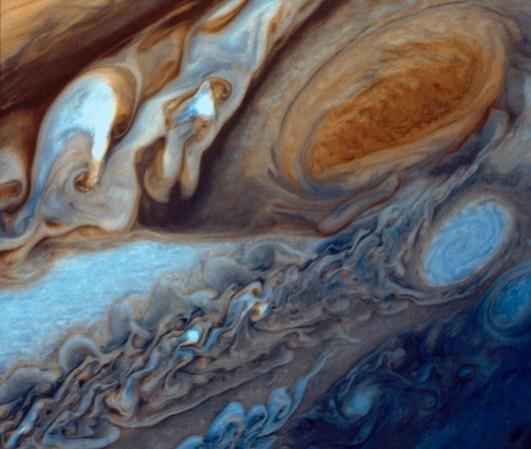The Solar System's largest and most ferocious storm — Jupiter's Great Red Spot (GRS)— is shrinking. It is expected to completely die away in about 10 years from now, but as it gets smaller, it has been found to e also becoming taller.
A recent study has found that the GRS has increased in area at least once over the last century and a half, reports NASA. "Storms are dynamic, and that's what we see with the Great Red Spot. It's constantly changing in size and shape, and its winds shift, as well," said Amy Simon, an expert in planetary atmospheres at NASA's Goddard Space Flight Center in Greenbelt, Maryland, and lead author of the new paper, published in the Astronomical Journal.
The study, reports NASA, was done based on data that has been on record since 1878. Since then, there has been at least one record of the GRS per year. Adding to this is the data from Hubble's Outer Planets Atmospheres Legacy (OPAL), a project that makes annual observations of Jupiter. NASA's Jupiter data collection actually started in 1979 with the two Voyagers flying by the planet.
All this information was put together to get a clearer picture of the GRS, including its shape, size, color, and drift rate. Whenever possible, researchers also factored in internal wind speeds of the storm, notes NASA.
Researchers found that the GRS recently began to drift westward faster than normal. The storm, however, stays in the same latitude because massive jet streams that circle the entire planet keep it spinning in place. It gradually circles the planet in the opposite direction of Jupiter's eastward rotation.

Now that the storm is contracting, researchers expected internal winds to get stronger, NASA compares this to an ice skater that tends to spin faster as they pull their arms in.
The GRS, on the other hand, has started to stretch up instead of spinning faster. This can be likened to a clump of clay on a potter's wheel that with pressure applied to the base will force the material to move upward. As the base gets smaller, the taller the clay gets.
Considering how large the GRS is –about 1.6 times the size of Earth– the addition in height is small, but still noticeable, notes the researchers. Also, the Spot is getting deeper in color, getting intensely orange, but it is not clear why this happening, they say.
"If the trends we see in the Great Red Spot continue, the next five to 10 years could be very interesting from a dynamical point of view," said Goddard co-author Rick Cosentino.
"We could see rapid changes in the storm's physical appearance and behavior, and maybe the red spot will end up being not so great after all."

















